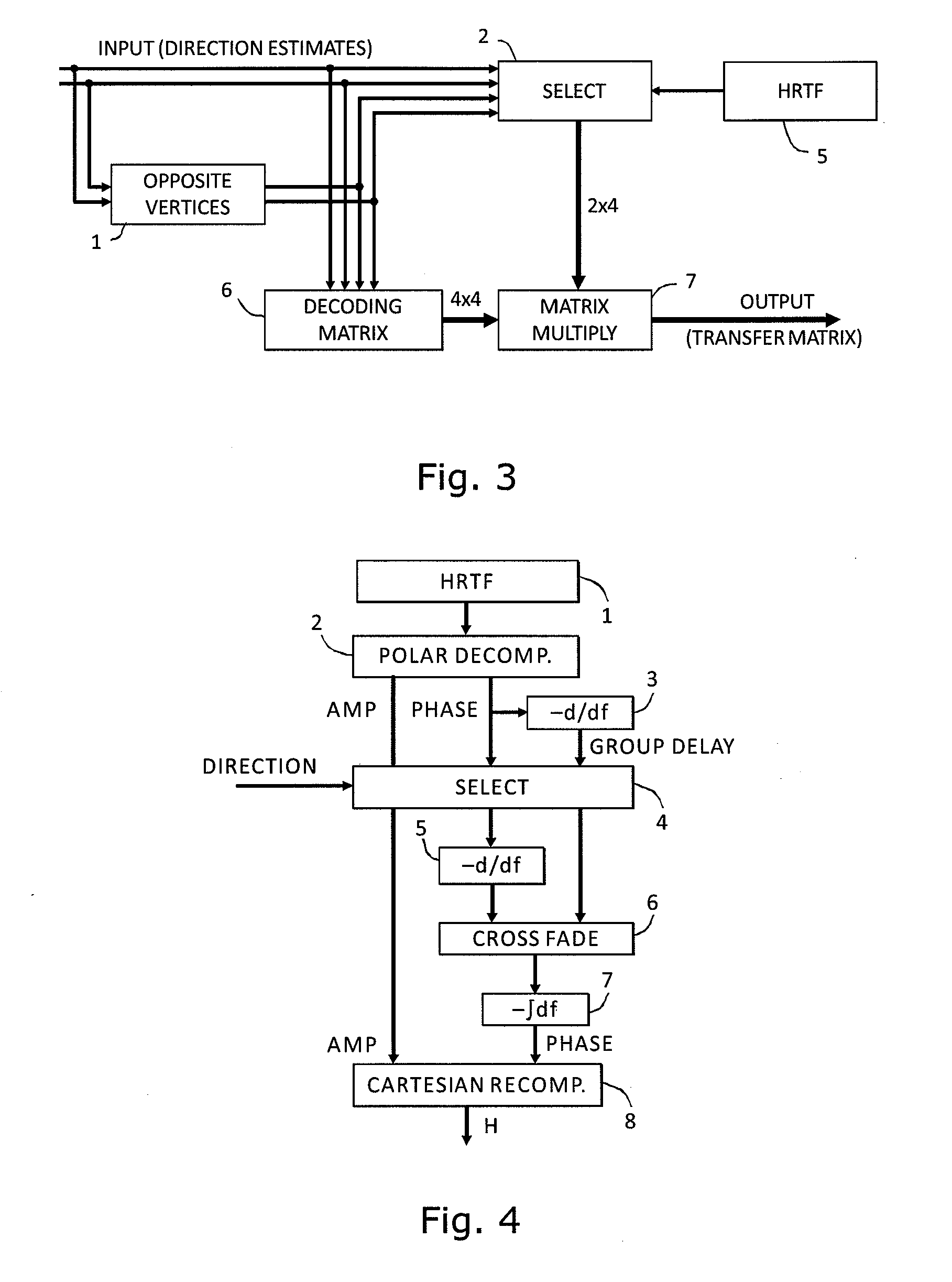Device and method for converting spatial audio signal
a technology of spatial audio signal and audio signal, applied in signal processing, stereophonic arrangments, electrical apparatus, etc., can solve the problems of loss of out-of-head sensation, loss of binaural playback experience, and inability to accurately localize sound sources, so as to improve the reproduction of transient sounds
- Summary
- Abstract
- Description
- Claims
- Application Information
AI Technical Summary
Benefits of technology
Problems solved by technology
Method used
Image
Examples
Embodiment Construction
[0053]FIG. 1 shows an audio processor component with basic components according to the invention. Input to the audio processor is a multi-channel audio signal. This signal is split into a plurality of frequency bands in a filter bank, e.g. in the form of an FFT analysis performed on each of the plurality of channels. A sound source separation unit SSS is then performed on the frequency separated signal. First, a parametric plane wave decomposition calculation PWD is performed on each frequency band in order to determine one or two dominant sound source directions. The dominant sound source directions are then applied to a virtual loudspeaker position calculation algorithm VLP serving to select a set of virtual sound source or virtual loudspeaker directions, e.g. by rotation of a fixed set of virtual loudspeaker directions, such that the one or both, in case of two, dominant sound source directions coincide with respective virtual loudspeaker directions. The precise operation perform...
PUM
 Login to View More
Login to View More Abstract
Description
Claims
Application Information
 Login to View More
Login to View More - R&D
- Intellectual Property
- Life Sciences
- Materials
- Tech Scout
- Unparalleled Data Quality
- Higher Quality Content
- 60% Fewer Hallucinations
Browse by: Latest US Patents, China's latest patents, Technical Efficacy Thesaurus, Application Domain, Technology Topic, Popular Technical Reports.
© 2025 PatSnap. All rights reserved.Legal|Privacy policy|Modern Slavery Act Transparency Statement|Sitemap|About US| Contact US: help@patsnap.com



